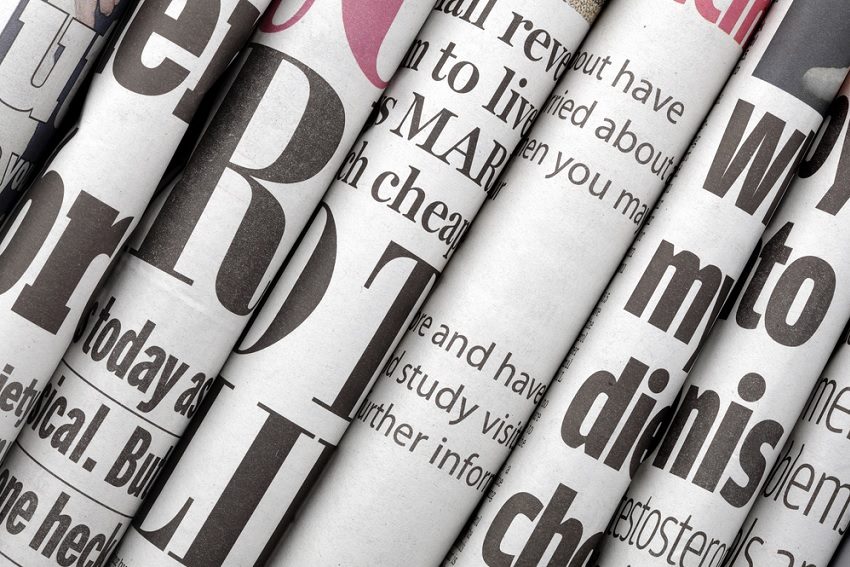SA's Media History Shows Flaws in New Reforms

The lessons of Australia’s last major media ownership shakeup suggest that South Australians are right to be concerned by the threat of diminished media diversity in the state, writes Chris Jervis.
Last week, the Turnbull Government passed its package of media reforms in the Senate.
The most contentious of the reforms include the abolition of the rule preventing an entity exercising control of commercial television broadcasting licences where the combined licence area exceeds 75 per cent of Australia’s population, and the repeal of the ban on one proprietor controlling more than two-out-of-three media platforms — TV, radio or newspaper — in any one commercial licence area.
The Government was only able to pass their reforms once it had secured the support of a bloc of South Australian Senators, led by Nick Xenophon. In this context, the specific interests of South Australians were a material factor in the course of shaping this legislation, with the potential to undermine media diversity — the vital cornerstone of our democracy.
Senator Xenophon was successful in making amendments to the Government’s legislation, adding measures designed to protect media diversity in smaller markets like Adelaide from cuts which many fear will follow in an acutely consolidated media sector firmly rooted in the eastern states.
With the final safeguards against ownership concentration now dissolved by the Broadcasting Legislation Amendment, many speculate that the reform will yield the most significant change to Australia’s media ownership landscape in 30 years. The lessons of Australia’s last major media ownership shakeup suggest that South Australians are right to be concerned by the threat of diminished media diversity in the state.
It was an act of the Hawke Government in 1987 which allowed Rupert Murdoch’s News Corporation to prevail in their takeover bid for the Herald and Weekly Times Company. With its acquisition of HWT, News Corporation also acquired enough shares in Advertiser Newspapers Limited to take control of that company and its flagship publication, The Advertiser.
The Advertiser of the day was a quality broadsheet; a newspaper of record, with a history of robust independence. “It was a ‘tight’ newspaper, with limited editorial space,” said Don Riddell, the final Editor in Chief of The Advertiser before the takeover.
“Hard and accurate reporting led directly to two Royal Commissions and deep involvement with another. [The Advertiser] devoted two senior reporters for months to track the flow of drugs and the growing influence of the Mafia. This led to significant arrests. The arts coverage helped make the Adelaide Festival the nation’s leader. It championed the Fringe, still Australia’s biggest showpiece of emerging talent. It supported innovative approaches to food and backed the wine industry. And, with a full-time reporter dedicated to Aboriginal affairs, it was part of SA’s leadership in this crucial relationship.”
The Advertiser existed in a two-newspaper market, alongside The News — the paper Rupert Murdoch inherited at age 22 and the nucleus of what became a diversified media empire which still bears its name.
Having acquired The Advertiser, Murdoch quickly divested of The News in an ill-fated managerial buyout. Under new ownership, The News struggled and ultimately closed its doors in 1992, leaving Adelaide as a one newspaper town.
In October 2015, in perhaps his final interview, I spoke to former Premier John Bannon about The Advertiser takeover.
“The [Hawke] Government couldn’t afford to have a massive falling out with Murdoch by blocking the takeover and [we considered that] one way or another he would prevail,” said Bannon.
“What we believed, probably somewhat naively, is that there would be safeguards in terms of what we perceived to be the way the ‘tiser had independently run its own editorial lines, which, of course, didn’t happen in the long run.”
Bannon recalled conversations with News Corporation management, referring to a file note of a conversation with former Advertiser Chairman, Bruce Macklin, who joined the News Corporation board as the Adelaide representative.
“Bruce told me that there was no place for an independent, local board, which is something we lobbied Murdoch very hard for. He said there’s no evidence of interference at the editorial level and assurances had been given [that this would not occur].”
“If there is a problem perceived [by the Bannon Government] Macklin [was] prepared to raise it at a higher level as certain undertakings had been made clear to him.”
Over the ensuing years, The Advertiser indeed moved away from high-brow reporting in a cool and measured demeanour to become the more mid-market, tabloid style offering it is today.
Despite the aspersions often cast at the Murdoch press, the change in style has little to do with the notion of disrespect for quality journalism and more to do with the complimentary make-up of News Corp’s stable of publications, including the Australian, published from Sydney and with very limited focus on distinctly South Australian matters.
“It is as though [The Advertiser] is designed to be a support to The Australian,” said Don Riddell.
With the legislative underpin of a vibrant and diverse media now discarded, we are only left to speculate on what the adverse implications for the public interest may be.
The experience of the 1980s provides a salient and illustrative case study of what can happen when media diversity is not adequately protected and promoted. While the depressed state of the traditional media sector is one significant difference between the two scenarios, the vital role that the media plays in our society has not changed.
If the safeguards enshrined in the contemporary media reforms, like those of the 1980s, merely represent lip service to the notion of a strong and potent media in South Australia, Senate horse-trading will have delivered us a mule and not the stallion we deserve.
Chris Jervis is a political historian and Media Adviser to the Federal Labor Member for Wills.